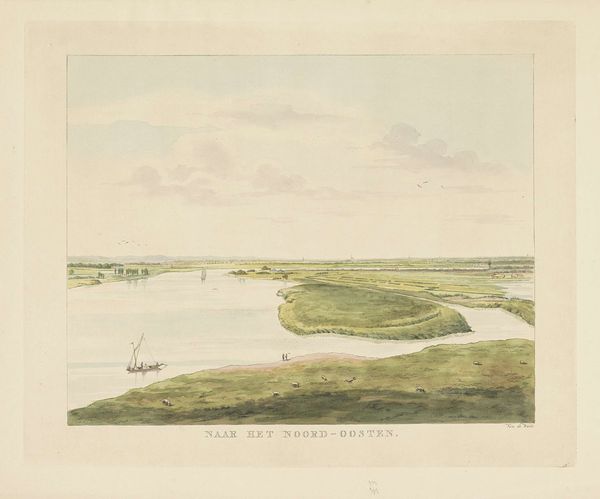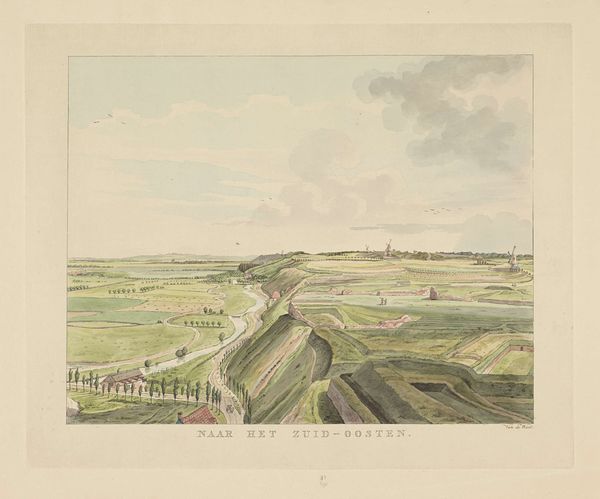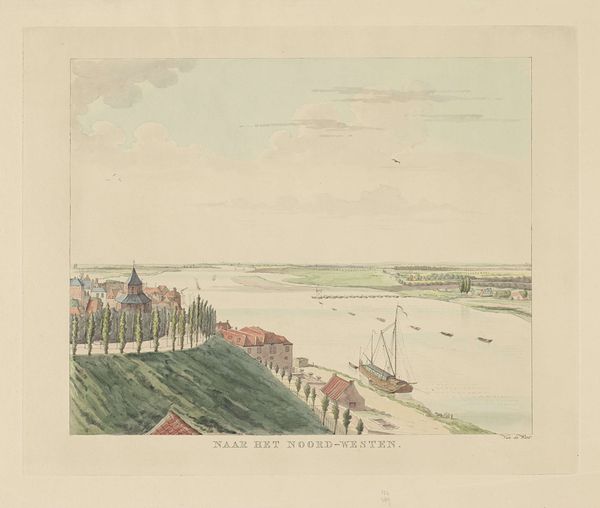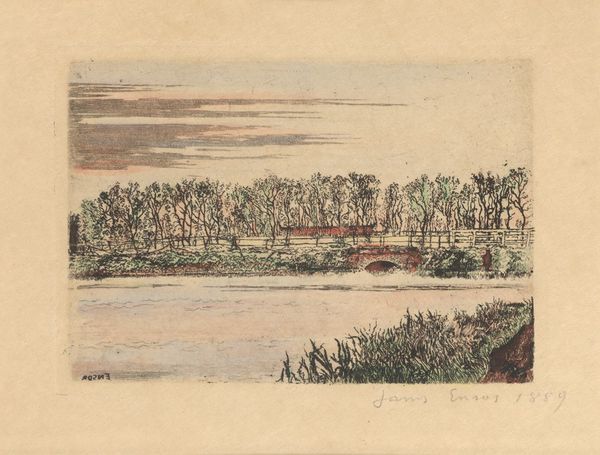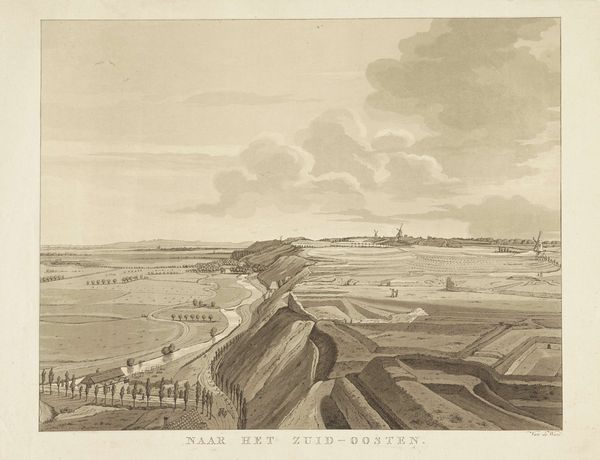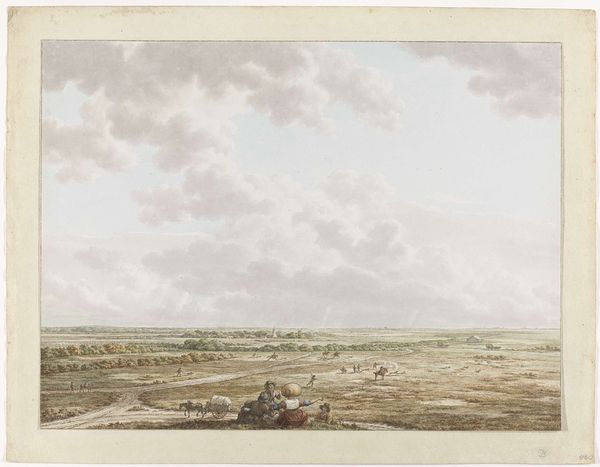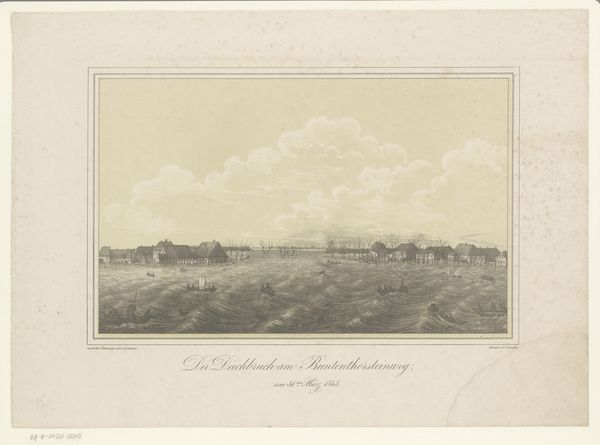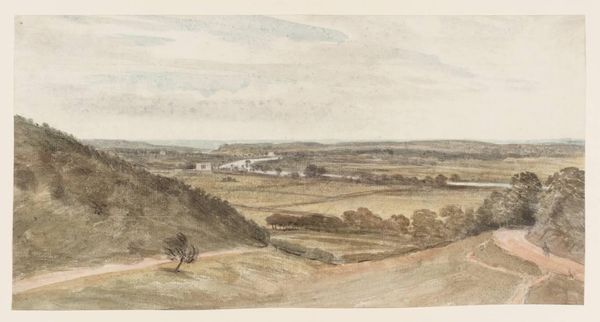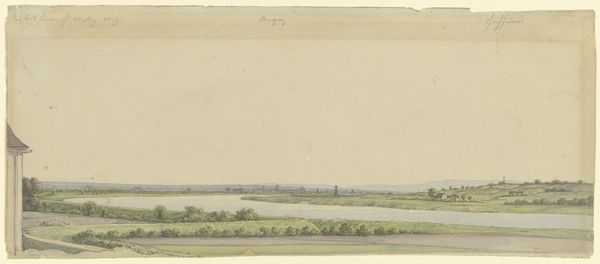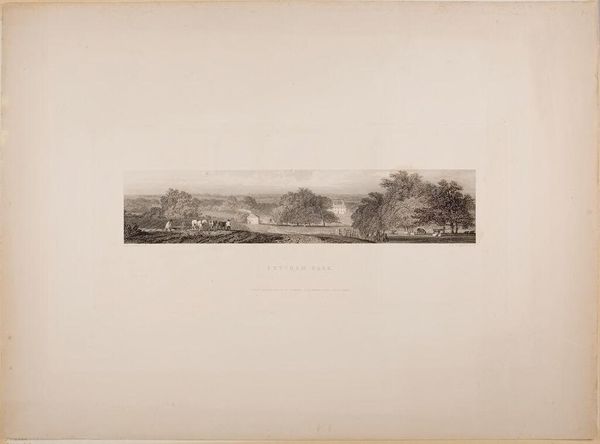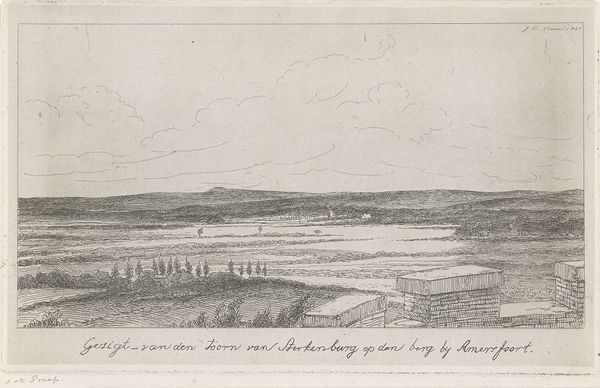
plein-air, watercolor
#
plein-air
#
landscape
#
watercolor
#
romanticism
#
watercolour illustration
#
watercolor
Dimensions: height 317 mm, width 393 mm
Copyright: Rijks Museum: Open Domain
Editor: This is "View of the Landscape East of Nijmegen" by Derk Anthony van de Wart, made sometime between 1815 and 1824 using watercolor. The way the different greens fade into each other, particularly toward the horizon, makes the piece feel very expansive. What do you see in it? Curator: Note the carefully constructed composition: the subtle horizontal bands leading back into the distance create a visual pathway. Observe how the artist divides the picture plane, utilizing color and form to guide the viewer's eye. What purpose does this organizational structure serve? Editor: It makes the flat land seem less so, but also highlights the buildings in the immediate foreground because they're so much more clearly defined than what's behind them. The texture, the details... Curator: Precisely. Consider the function of line in delineating form; note how the precise details foreground our encounter with specific objects, the linear treatment emphasizing the transition into an implied depth. The artist's treatment invites us to carefully scrutinize each plane of the scene. The details on the architecture offer a narrative depth missing elsewhere in the frame. Editor: I hadn't thought of the texture adding depth. I was just noticing the differences, not their relationship. Curator: Think about how van de Wart handles space and light. Ask yourself: where are the darkest and lightest points in the image, and how do they structure the relationship between the painting's surface and its illusion of depth? It's a game of geometry, wouldn't you say? Editor: Definitely, it seems to come down to contrasts in texture, darkness, and definition, pulling the viewer’s eye deeper into the scene. Curator: I'm glad you recognize how structure relates to an illusion of depth. Van de Wart is toying with the eye. We can almost feel how vast the scene is by seeing what shapes it contains, even though the image is relatively flat. Editor: It’s funny, I’d only thought of landscape painting in terms of "big picture" qualities. I see that really examining structure has something unique to offer.
Comments
No comments
Be the first to comment and join the conversation on the ultimate creative platform.
